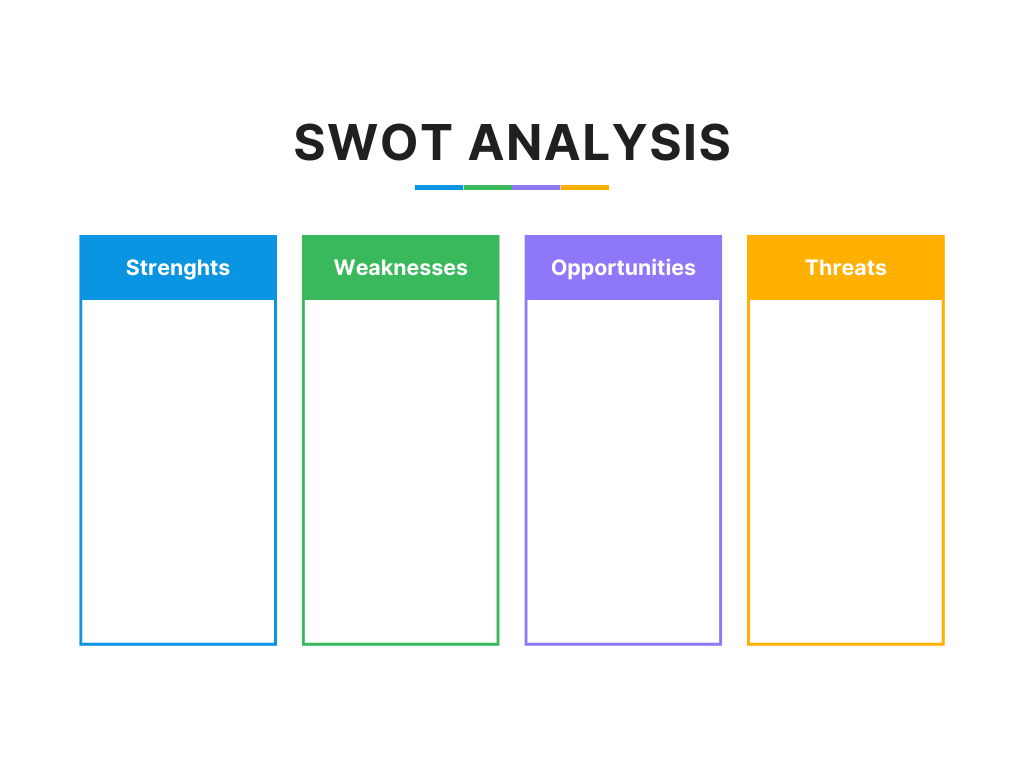SWOT analysis is a strategic planning tool used to identify and analyze the internal and external factors that can impact an organization's objectives. The acronym SWOT stands for Strengths, Weaknesses, Opportunities, and Threats. Here’s a detailed look at each component:

Strengths
Internal factors that give an organization an advantage over others.
Examples: Strong brand reputation, skilled workforce, proprietary technology, financial resources.
Purpose: Helps identify what the organization does well and can leverage to achieve its goals.
Weaknesses
Internal factors that place the organization at a disadvantage relative to others.
Examples: Poor location, lack of capital, weak brand recognition, outdated technology.
Purpose: Highlights areas for improvement and potential vulnerabilities that need to be addressed.
Opportunities
External factors that the organization can exploit to its advantage.
Examples: Market growth, new technological advancements, changes in regulations, competitor weaknesses.
Purpose: Identifies external possibilities for growth and expansion.
Threats
External factors that could cause trouble for the organization.
Examples: Economic downturns, increased competition, changing consumer preferences, regulatory changes.
Purpose: Recognizes potential challenges and risks that need to be managed or mitigated.
How to Conduct a SWOT Analysis
Gather Data: Collect relevant data from internal reports, market research, and industry analysis.
Brainstorm: Engage key stakeholders in brainstorming sessions to identify strengths, weaknesses, opportunities, and threats.
Categorize: Organize the identified factors into the four SWOT categories.
Analyze: Evaluate how strengths can be used to exploit opportunities and how weaknesses can be mitigated by threats.
Strategize: Develop strategies to capitalize on strengths and opportunities while addressing weaknesses and threats.
Prioritize: Focus on the most critical factors that will have the most significant impact on the organization.
Benefits of SWOT Analysis
Comprehensive View: Provides a holistic view of the internal and external factors affecting the organization.
Strategic Planning:Informs strategic planning and decision-making processes.
Resource Allocation:Helps in prioritizing resource allocation to areas with the most potential for impact.
Risk Management:Identifies potential risks and areas for improvement.